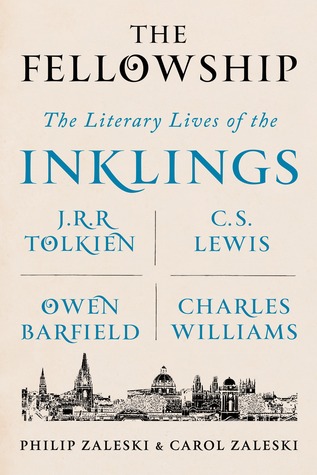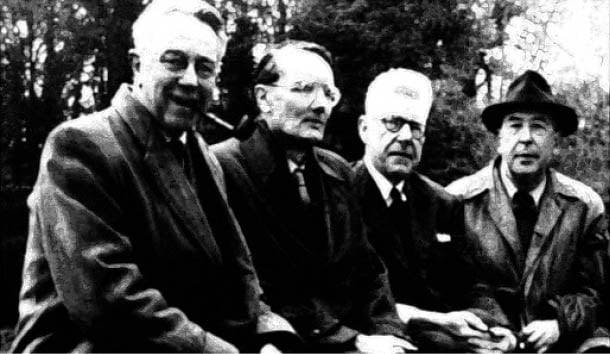“Every great man nowadays has his disciples,” wrote Oscar Wilde, “and it is always Judas who writes the biography.” Even conceding that Wilde was writing for effect, it is nonetheless true that biographers often betray their subjects with either a kiss or a curse, and that the kiss is sometimes more deadly than the curse. Wilde himself suffered abominably at the hands of Richard Ellmann, whose sympathetic portrayal poisoned every fact it touched with the cynicism of deconstructed meaning. In similar fashion, J.R.R. Tolkien and C.S. Lewis have often been ill served by their biographers. One thinks of Humphrey Carpenter’s biography of Tolkien (1977) and A.N. Wilson’s life of Lewis (1990). It is especially irksome that Carpenter’s book on the Inklings (1978) has straddled the decades since its publication as the generally perceived definitive work on the subject, whereas, in fact, it is anything but a full and fair treatment of the most important literary group of the 20th century. It is, therefore, entirely gratifying to find that this year has seen the publication of not one but two books on the Inklings, both of which deserve to eclipse Carpenter’s deficient and defective prototype.
The Oxford Inklings (Oxford: Lion Hudson) by veteran Lewis and Tolkien scholar Colin Duriez, is a delightful book that will warm the hearts of those who share the author’s enthusiasm for his subject. At the very least, it serves as a much-needed counterpoint to Carpenter’s somewhat jaded and jaundiced perspective. It is, however, the second book, The Fellowship: The Literary Lives of the Inklings, that demands our attention. Whereas the books by Duriez and Carpenter are, at around 300 pages, what might be termed welterweight volumes, The Fellowship, by Philip and Carol Zaleski, is truly a heavyweight, tipping the scales at over 600 pages. As such, it promises to be the full study of Tolkien, Lewis, and their circle that the subject so obviously warrants.
The authors of The Fellowship address the Inklings chronologically. A thematic approach would have made the book much easier to write, with each author being given a section of his own, thereby making it a compendium of several mini-biographies, but that would have left the book bereft of the historical engagement that the reader needs to understand how the lives of the several protagonists interacted with one another and with the times in which they lived. The Fellowship is, therefore, a story, a history, of the group from its embryonic genesis in the respective childhoods of the main protagonists—Tolkien, Lewis, Charles Williams, and Owen Barfield—through its coming of age as a literary group in Oxford, and its many trials and tribulations as its members begged to differ, proceeding to its effective dissolution upon the death of Lewis and ending with the later years of Tolkien and Barfield.
The panoramic and chronological scope of the book is praiseworthy, but the devil can sometimes be seen in the details, especially in the manner in which the authors occasionally succumb to the language and lunacy of the modern academy. Thus, we are told that Lewis had a “canny sense of person”:
He cultivated an image, that of the ordinary chap, endowed perhaps—one can do nothing about these things—with extraordinary brains, who lived an ordinary life of plain talk, plain food, and plain (“mere”) faith. He called himself Jack, a plain handshake of a name, a far cry from the Clive Staples he had been christened, and to be Jack was the hard work of a lifetime. Lewis longed to be ordinary . . .
A page or so later we are told that Lewis “would have to learn to play the parts assigned to him, until, as an adult, he could assume his chosen part as Everyman.”
To speak as plainly as Lewis would no doubt have done (had he read this), it is arrant nonsense, worthy of Wilde at his provocative worst, or of that old liar Screwtape at his wicked “best,” to argue that we are nothing but the parts that we play or the masks that we wear. Lewis was not cultivating an image when he sought to be ordinary; he was seeking to conform himself to the reality beyond the self, a reality that demands the discarding of all self-constructed and therefore self-deceiving masks.
Although this descent into the defaced inanity of postmodernism is lamentable, it is also thankfully very rare in this book. For the most part, the Zaleskis are both perceptive and au point in their handling of their subject. They offer great insight into the confused and confusing psyche of Charles Williams, treating this most perplexing of men with both the gravity and the levity that he deserves. Having paid due deference to the importance of his engagement with Dante’s Divine Comedy, and having discussed the kinship of spirit that he had in his Dante scholarship with Dorothy L. Sayers, the authors are clearly and rightly amused by Williams’s apparent conflation of his love for his wife with Dante’s love for Beatrice: “He addressed her as Madonna and declared his love for her to be amor intellectualis—an exalted phrase, to be sure, but not one that many women welcome from their lovers.”
There is much that will please, fascinate, and enlighten the aficionado of Tolkien and Lewis in The Fellowship, as well as a much-needed engagement with the life and ideas of the forgotten and neglected Inkling, Owen Barfield, whose anthroposophy sits somewhat uncomfortably beside the Christian orthodoxy of the other members of the group.
The portrayal of the debates of the Socratic Club is handled well, especially with regard to the legendary battle between Lewis and the Catholic philosopher Elizabeth Anscombe on the relationship between naturalism and miracles, a battle that most people, including Lewis himself, judged that Anscombe had won. But the Zaleskis are better as historians than they are as literary critics, a fact that becomes apparent in the inadequacy of their critique of Lewis’s novel That Hideous Strength, and of his debate with E.M.W. Tillyard, published as The Personal Heresy.
One of the highlights is the authors’ treatment of Lewis’s broadside against the chronological snobbery inherent in the progressivist understanding of history, and particularly intriguing is the book’s comparison of Tolkien’s view of the art of translation with that of T.S. Eliot, the former’s view of the challenge of translating Gawain and the Green Knight conforming to the latter’s views on the translating of Dante.
Unfortunately, The Fellowship ends with the deflating concession that “the Inklings never achieved the formal brilliance of the greatest of their contemporaries, such as Joyce, Woolf, Nabokov, Borges, or Eliot,” and that they were “surpassed in poetry and prose style by the very modernists they failed to appreciate.” Perhaps the authors hoped that this bit of postmodern conformism would placate their academic peers.
Nonetheless, The Fellowship remains a work of consummate scholarship worthy of its subject.

[The Fellowship: The Literary Lives of the Inklings, by Philip Zaleski & Carol Zaleski (New York: Farrar, Straus and Giroux) 618 pp., $30.00]

Leave a Reply